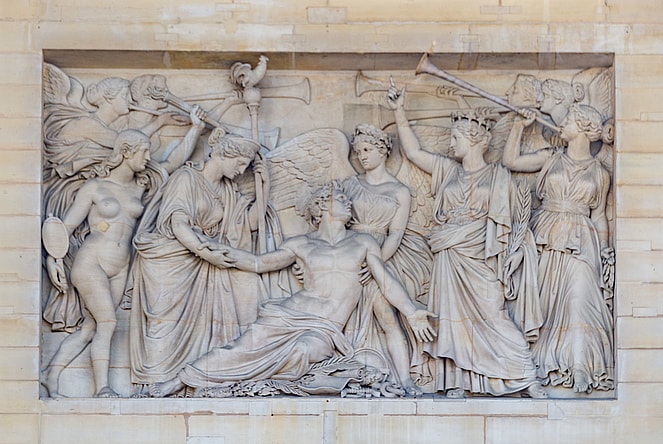
The ancient Roman Empire, known for its grandeur and cultural achievements, has left behind a wealth of artifacts from ancient Rome that offer a glimpse into its complex society. These artifacts from ancient Rome range from monumental architecture and intricate sculptures to everyday objects and ceremonial items. Each artifact not only tells a story about the art and craftsmanship of the time but also provides valuable insights into the social, political, and religious practices of ancient Rome.
Artifacts from ancient Rome are not merely historical objects; they are pieces of a larger puzzle that, when assembled, reveal the intricacies of one of history’s greatest civilizations. They reflect the empire’s technological prowess, artistic sensibilities, and societal norms. From opulent jewelry and elaborately decorated vessels to everyday tools and inscriptions, these artifacts embody the achievements and daily lives of Romans, bridging the gap between their world and ours.
This article explores twelve rare and significant artifacts from ancient Rome, ranked from 12 to 1. Each artifact is accompanied by its story, shedding light on its historical context and significance. These artifacts from ancient Rome not only highlight the artistic and technological advancements of the Romans but also reflect the values and practices of their time. As we delve into the stories behind these artifacts from ancient Rome, we gain a deeper appreciation for the richness of Roman history and the enduring legacy of its material culture.
Also Read:8 Best Museums in DC and What They’re Known For
12. The Duenos Inscription (c. 600 BCE)

The Duenos Inscription is an early example of Latin writing, discovered on a limestone slab in Duenos, near Rome. Dating to around 600 BCE, this artifact is one of the oldest known Latin inscriptions and artifacts from ancient Rome and provides crucial evidence of early Latin script and language. The inscription, which is written in an archaic form of Latin, is a testament to the development of writing in the Roman world.
The inscription itself is a religious text, likely a dedication or a vow. It is written in a form of Latin that predates the classical language, offering valuable insights into the evolution of Latin script and phonology. Scholars believe it may have been used in a ritual or ceremonial context, reflecting the religious practices of early Rome among other artifacts from ancient Rome.
The Duenos Inscription is significant because it represents a transitional period in the development of Latin. Its discovery has provided historians and linguists with crucial information about the early use of Latin and the cultural influences that shaped its development. These artifacts from ancient Rome underscore the deep historical roots of Roman civilization and the continuity of its cultural practices.
11. The Lapis Niger (c. 500 BCE)
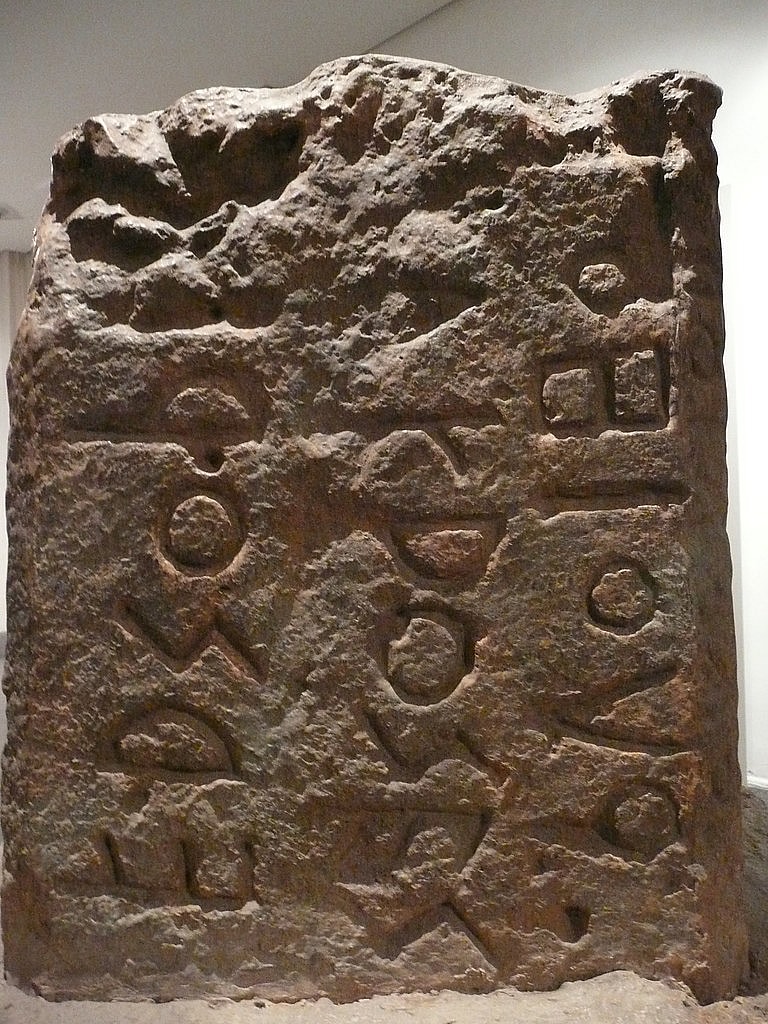
The Lapis Niger, or “Black Stone,” is an ancient Roman artifact discovered in the Roman Forum among the most interesting artifacts from ancient Rome. This black marble slab, which dates to around 500 BCE, is inscribed with an archaic Latin text that is one of the earliest known examples of Roman writing. The inscription is notable for its use of an early form of Latin script and its association with the religious and political life of early Rome.
The Lapis Niger was originally part of a sacred precinct and is believed to have been a boundary marker or a protective amulet. The inscription on the stone is a mix of Latin and Oscan, reflecting the diverse linguistic influences in early Rome. It contains a decree or curse related to the sanctity of the site, indicating its importance in the religious and political landscape of the time among other artifacts from ancient Rome.
The Lapis Niger provides valuable insights into the early history of Rome and the development of its written language. It is a key piece in understanding the evolution of Roman script and the religious practices that shaped early Roman society. The artifact’s significance lies in its role as a historical marker and its contribution to our understanding of ancient Roman culture.
Read More: Here’s Everything You Need to Know About the World’s Largest Toy Museum
10. The Pompeii Graffiti (79 CE)
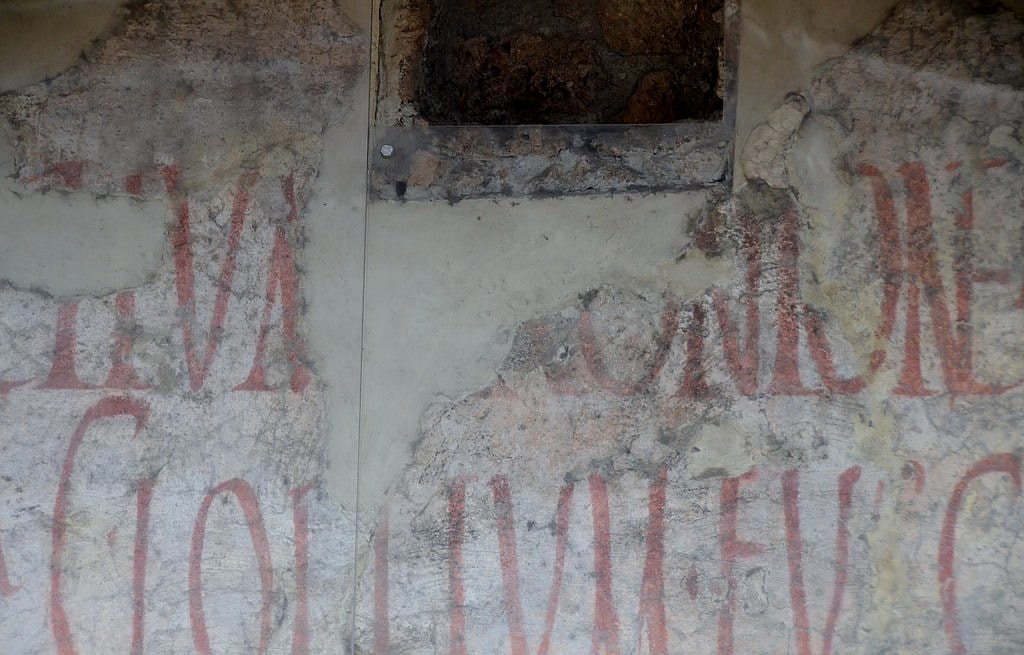
The Pompeii Graffiti refers to a collection of inscriptions found on the walls of buildings in Pompeii, an ancient Roman city famously destroyed by the eruption of Mount Vesuvius in 79 CE. These inscriptions and artifacts from ancient Rome, which range from political slogans and advertisements to personal messages and poetic verses, offer a unique window into the everyday life of Pompeii’s inhabitants.
The graffiti provides a snapshot of Roman life, revealing aspects of daily activities, social attitudes, and personal relationships. Some inscriptions are humorous or satirical, while others are serious or sentimental. The graffiti includes political statements, love notes, and even advertisements for local businesses, reflecting the vibrant and diverse nature of Pompeian society.
The Pompeii Graffiti is invaluable for historians because it offers a direct connection to the thoughts and expressions of ordinary people in ancient Rome among other artifacts from ancient Rome. Unlike monumental inscriptions or official records, these personal and informal messages provide a more intimate view of Roman life. The graffiti’s preservation in the volcanic ash of Pompeii has allowed for an unprecedented glimpse into the personal and social dynamics of a Roman city.
9. The Augustus of Prima Porta (c. 20 BCE)
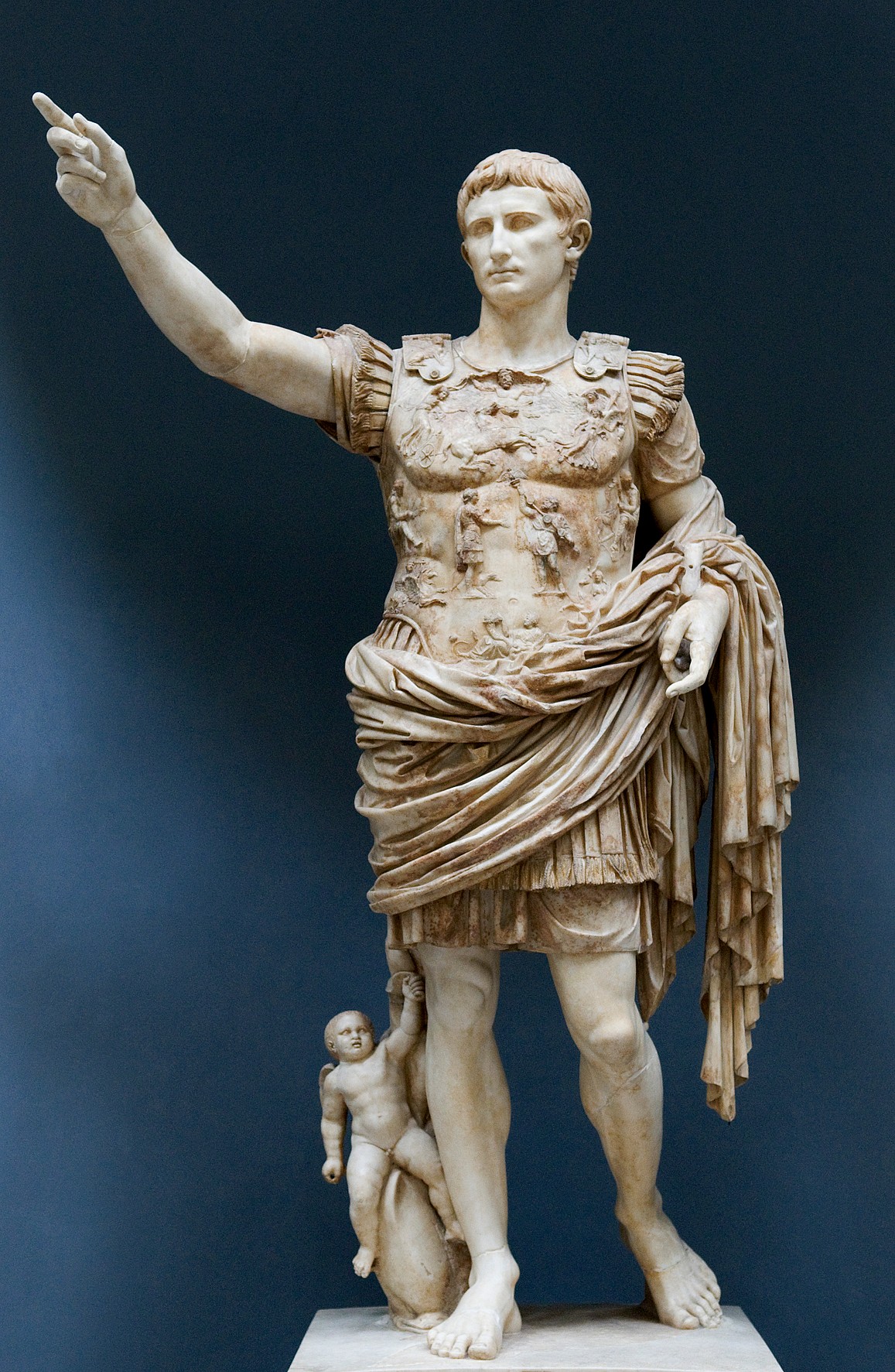
The Augustus of Prima Porta is a marble statue depicting the Roman Emperor Augustus, discovered in the villa of Livia at Prima Porta, near Rome. Dating to around 20 BCE, this statue is one of the most iconic representations of Augustus and provides valuable insights into his portrayal and the political propaganda of the early Roman Empire with artifacts from ancient Rome.
The statue depicts Augustus in a commanding pose, dressed in military armor and addressing his troops. It is adorned with symbolic elements, such as the figure of Cupid riding a dolphin, which alludes to Augustus’s divine ancestry and his connection to the gods among other artifacts from ancient Rome. The detailed and idealized representation of Augustus reflects his image as a powerful and benevolent ruler.
The Augustus of Prima Porta is significant for its artistic and political context. It exemplifies the use of imperial imagery and propaganda to consolidate Augustus’s power and legitimize his rule. The statue’s artistic style, combining realistic and idealized elements, also highlights the development of Roman portraiture and the emphasis on portraying leaders in a manner that reflects both their authority and their divine favor with artifacts from ancient Rome.
Also Read: 10 Facts About Greek Gods You May Not Know
8. The Ara Pacis Augustae (13-9 BCE)
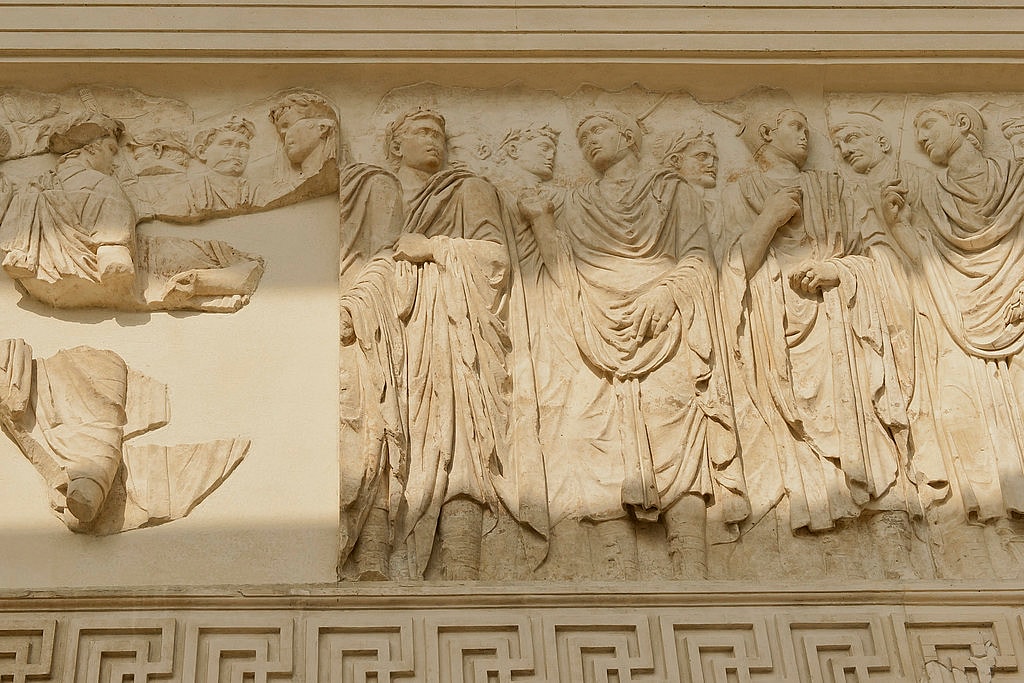
The Ara Pacis Augustae, or Altar of Augustan Peace, is a monumental altar dedicated to Pax, the Roman goddess of peace. It was commissioned by the Roman Senate in 13 BCE to commemorate Augustus’s successful campaigns and the establishment of peace within the empire. The altar is renowned for its elaborate reliefs, which depict scenes of Roman life, religious rituals, and mythological events among other artifacts from ancient Rome.
The Ara Pacis is notable for its detailed and symbolic reliefs, including the Procession of the Imperial Family and the Tellus Relief, which represent the prosperity and peace achieved under Augustus’s reign. The altar’s decoration reflects the political and cultural ideals of the Augustan era, emphasizing themes of peace, prosperity, and imperial legitimacy.
The Ara Pacis Augustae provides valuable insights into the political and religious propaganda of the early Roman Empire in artifacts from ancient Rome. Its intricate reliefs and inscriptions highlight the role of art and architecture in shaping public perception and promoting the emperor’s achievements. The altar’s preservation and restoration have allowed historians and archaeologists to study its significance in the context of Augustan Rome.
7. The Colossus of Constantine (c. 315 CE)
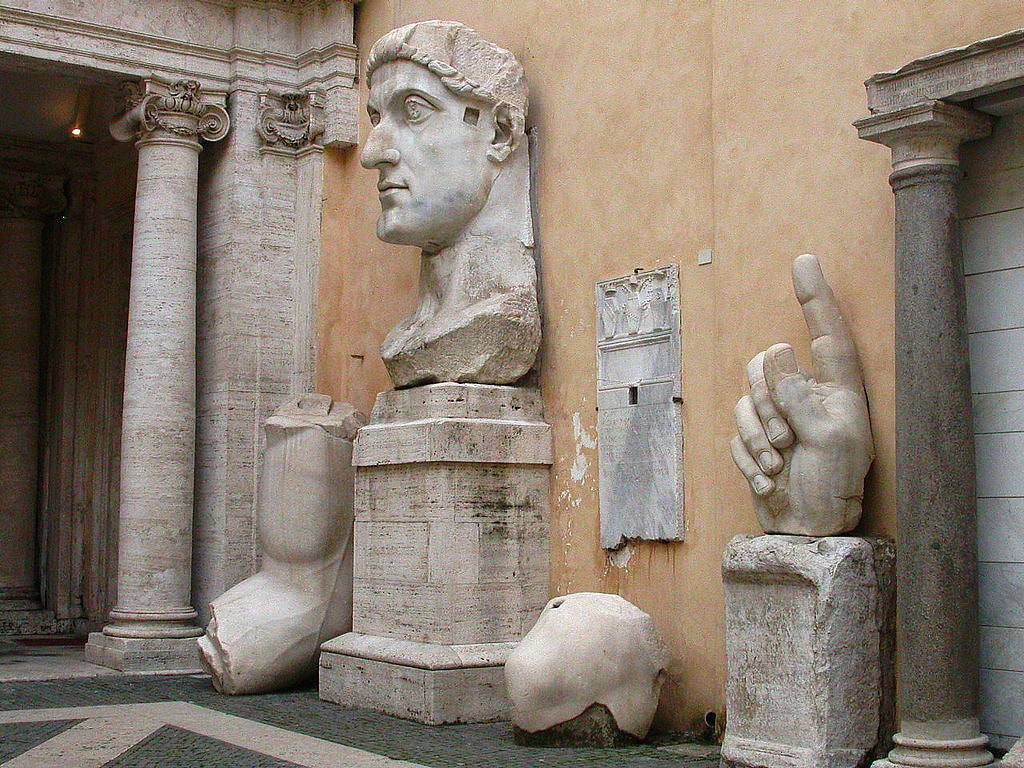
The Colossus of Constantine is a massive statue of Emperor Constantine the Great, originally erected in the Basilica of Maxentius in Rome. Dating to around 315 CE, the statue stood over 30 feet tall and depicted Constantine in a grandiose and idealized form alongside other artifacts from ancient Rome. Although only fragments of the statue remain, it remains one of the most significant examples of late Roman imperial art.
The Colossus of Constantine was designed to convey the emperor’s power and divine status. The statue’s size and imposing posture were intended to emphasize Constantine’s authority and reinforce his role as a ruler favored by the gods. The remaining fragments of the statue, including parts of the head, hand, and feet, provide a glimpse into the grandeur of Roman imperial sculpture.
The Colossus of Constantine is important for understanding the evolution of imperial portraiture and the representation of emperors during the late Roman Empire among other artifacts from ancient Rome. It reflects the shift in artistic style and political messaging that characterized the period, highlighting the emphasis on divine favor and imperial authority. The statue’s remnants offer valuable insights into the artistic and political context of Constantine’s reign.
Read More: 14 World War I Heroes Who Are Often Overlooked
6. The Pantheon Reliefs (c. 118-125 CE)
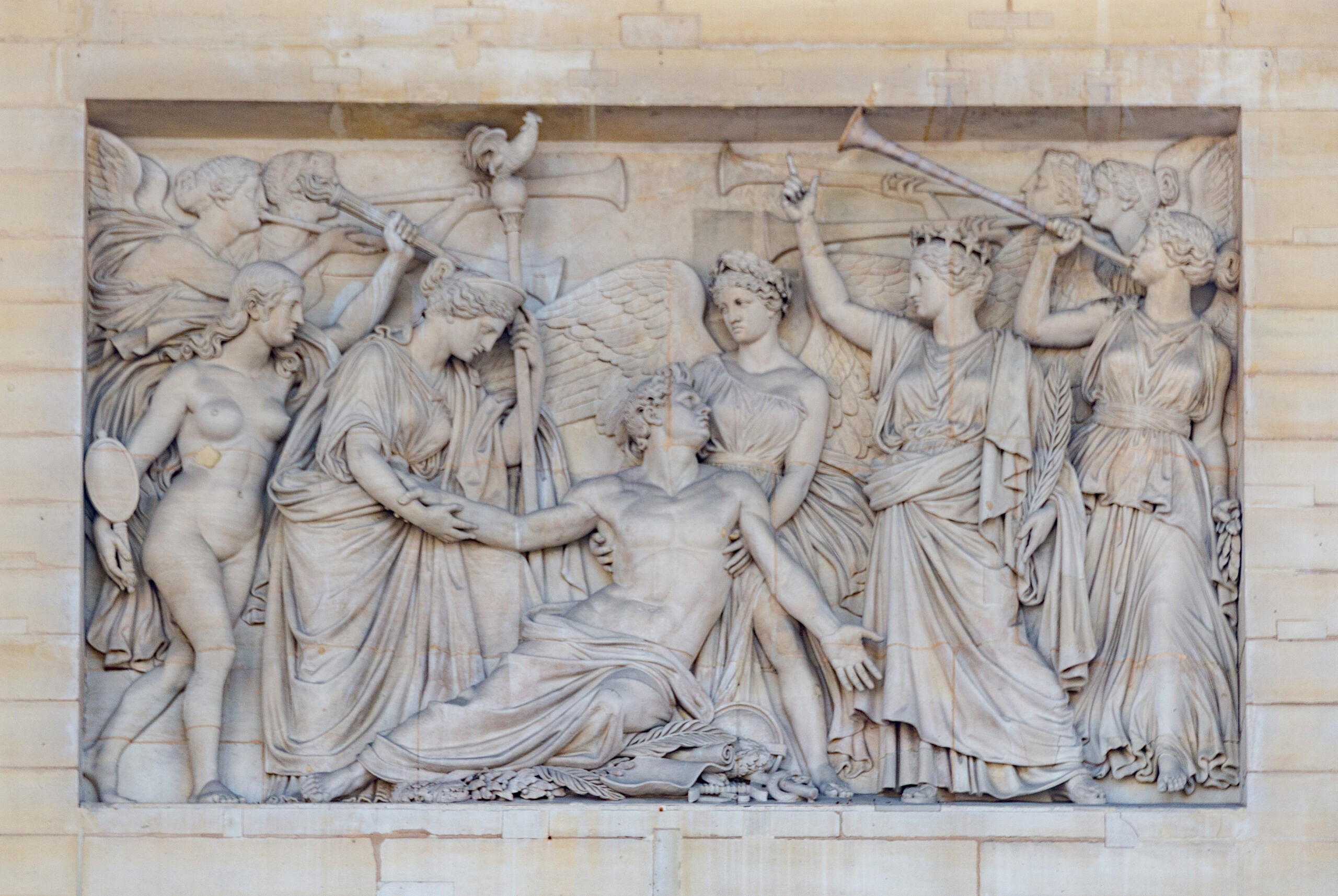
The Pantheon Reliefs are a series of marble reliefs found on the walls of the Pantheon, the iconic Roman temple dedicated to all the gods as one of the most important artifacts from ancient Rome. The reliefs date to the reign of Emperor Hadrian (c. 118-125 CE) and depict scenes from Roman mythology and religious ceremonies. They are renowned for their detailed and intricate carving, reflecting the artistic sophistication of the period.
The reliefs on the Pantheon’s interior walls include depictions of gods, goddesses, and mythological scenes that celebrate the divine nature of the temple and the grandeur of the Roman pantheon. The detailed carvings and symbolic elements underscore the importance of religious and cultural rituals in Roman society.
The Pantheon Reliefs provide valuable insights into Roman religious practices and artistic traditions among other artifacts from ancient Rome. They illustrate the role of art in religious and public spaces, highlighting the importance of visual representation in conveying religious and political messages. The reliefs’ preservation and placement within the Pantheon enhance our understanding of the temple’s significance and the artistic achievements of the Roman Empire.
5. The Capitoline Brutus (c. 300-250 BCE)
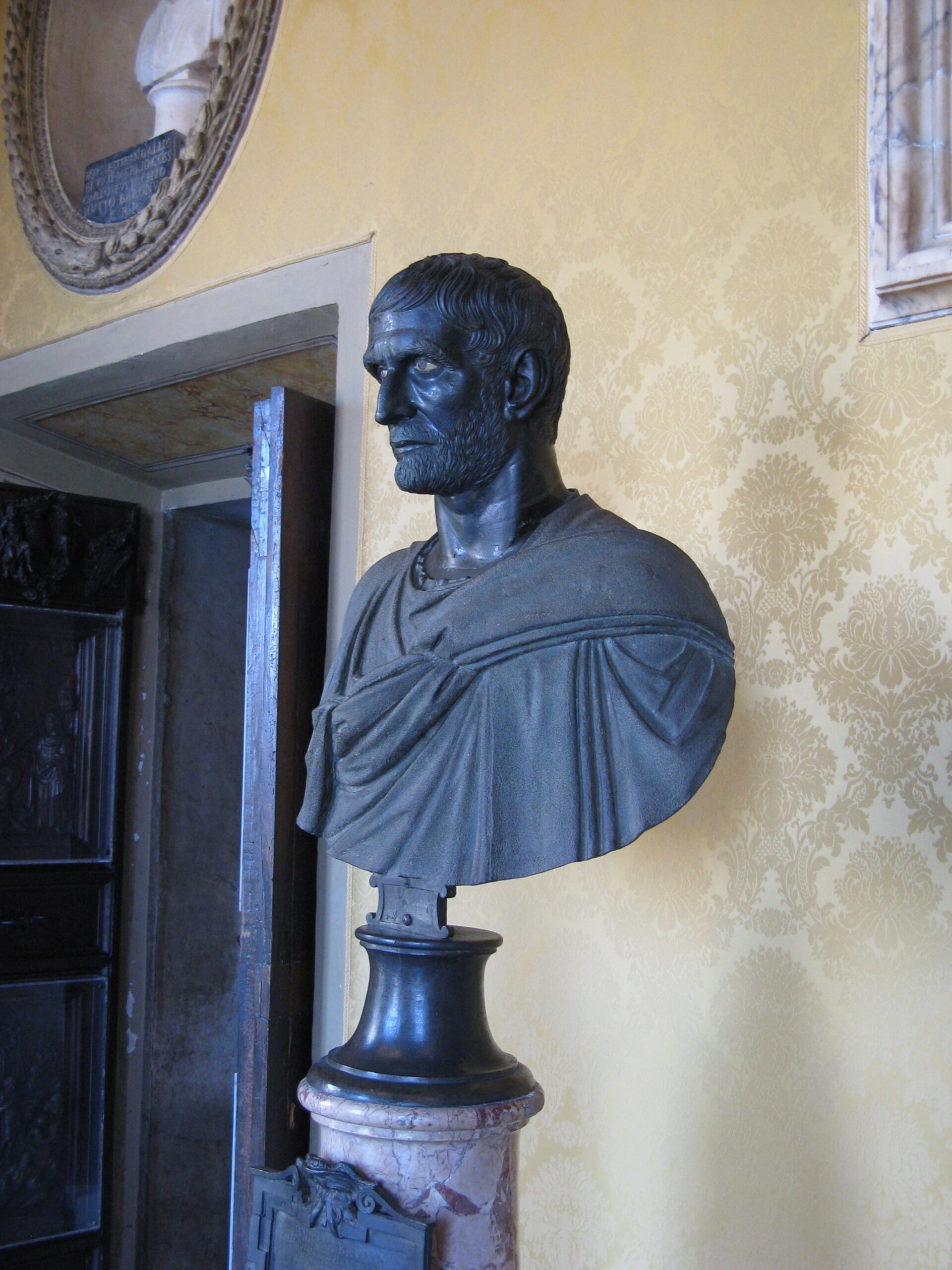
The Capitoline Brutus is a marble bust of a Roman statesman, thought to represent Lucius Junius Brutus, a legendary figure in Roman history and the subject of many artifacts from ancient Rome. Discovered on the Capitoline Hill in Rome, the bust is notable for its realistic and intense portrayal, reflecting the Roman emphasis on verism (the artistic depiction of real-life features).
The bust of Brutus is distinguished by its detailed and expressive features, which capture the stern and resolute character of the statesman. The veristic style of the bust emphasizes the virtues of age and experience, aligning with Roman values of gravitas and auctoritas.
The Capitoline Brutus is significant for its representation of Roman portraiture and its connection to Roman political ideals among other artifacts from ancient Rome. The bust offers insights into the Roman practice of depicting important historical figures with a focus on realism and individual character. It also highlights the role of portraiture in reinforcing political and social values in Roman society.
Also Read: 26 Retro Movie Posters Film Buffs Will Want to Collect
4. The Ludovisi Throne (c. 470 BCE)
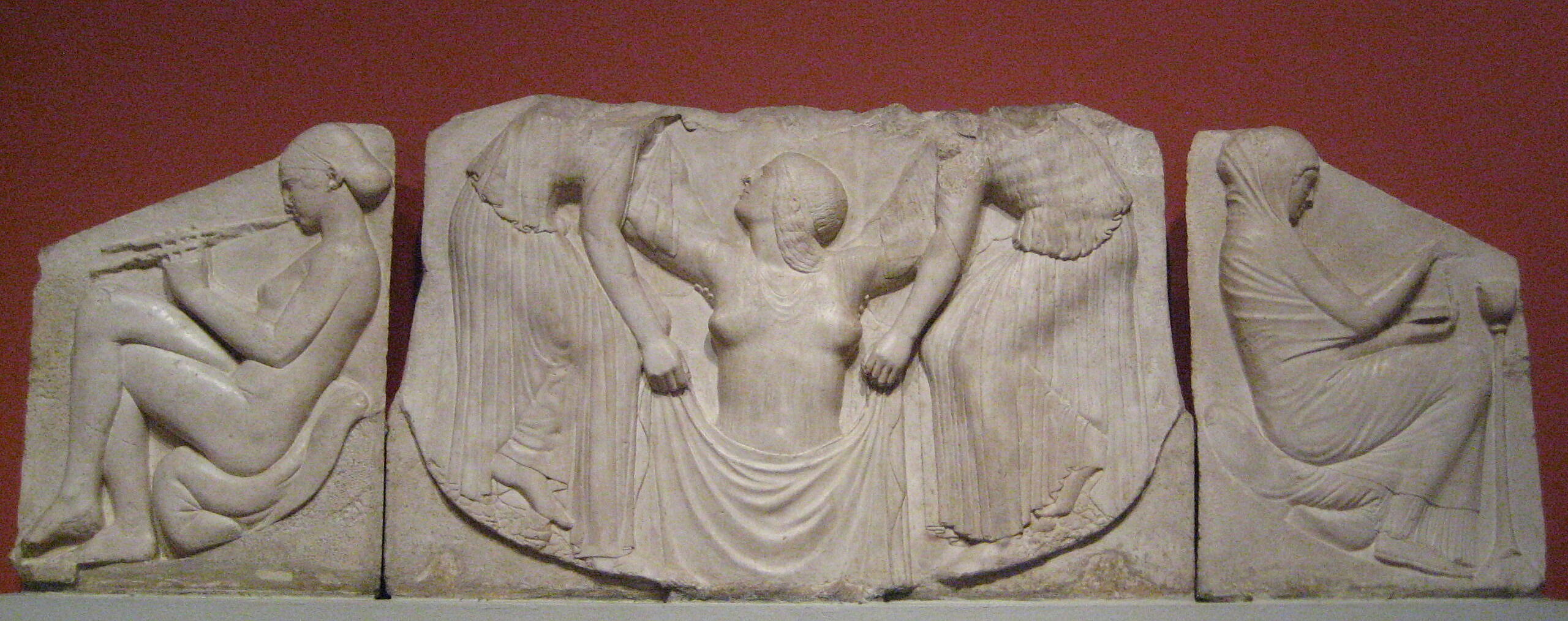
The Ludovisi Throne is a marble relief that was originally part of a monumental throne, discovered in the Ludovisi Collection in Rome. Dating to around 470 BCE, the relief is renowned for its intricate and elaborate depiction of mythological scenes, including the depiction of a goddess, possibly Aphrodite, and her attendants in one of the impressive artifacts from ancient Rome.
The Ludovisi Throne is notable for its high-relief sculpture and detailed representation of divine figures, reflecting the artistic sophistication of the period. The relief includes elements of Greek mythology and Roman religious practices, illustrating the blending of cultural influences in Roman art.
The Ludovisi Throne is important for understanding the development of Roman sculpture and the integration of Greek artistic traditions among other artifacts from ancient Rome. Its detailed carving and mythological themes highlight the role of art in expressing religious and cultural values. The relief’s craftsmanship and artistic significance make it a key example of Roman monumental art.
3. The Alexander Mosaic (c. 100 BCE)
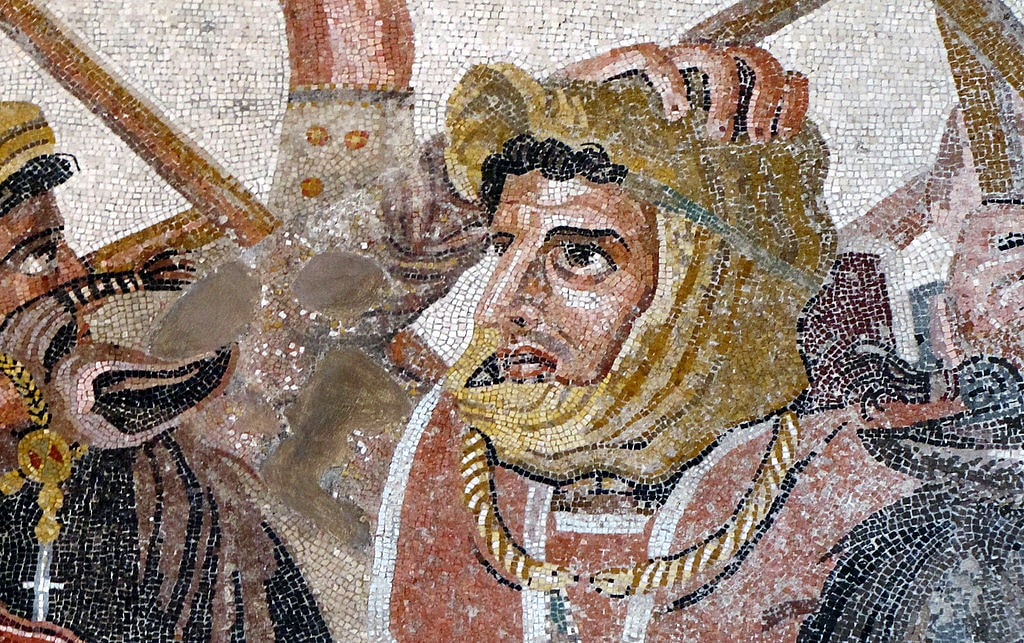
The Alexander Mosaic is a large floor mosaic depicting the Battle of Issus, where Alexander the Great defeated Darius III of Persia. Discovered in the House of the Faun in Pompeii, the mosaic dates to around 100 BCE and is renowned for its detailed and dynamic depiction of the historic battle among other artifacts from ancient Rome.
The mosaic captures the dramatic moment of the battle with vivid colors and intricate details, reflecting the artistic techniques and historical accuracy of the period as one of the most important artifacts from ancient Rome. The depiction of Alexander in heroic pose and the dynamic composition of the mosaic highlight the importance of historical and cultural representation in Roman art.
The Alexander Mosaic is significant for its artistic and historical value, offering insights into Roman views of Alexander the Great and the use of mosaic as a medium for historical narrative. The mosaic’s craftsmanship and historical context make it a key example of Roman artistic achievements and the influence of Greek culture on Roman art.
Read More: 6 Best Museums in Paris and What They’re Known For
2. The Via Labicana Venus (c. 100-150 CE)
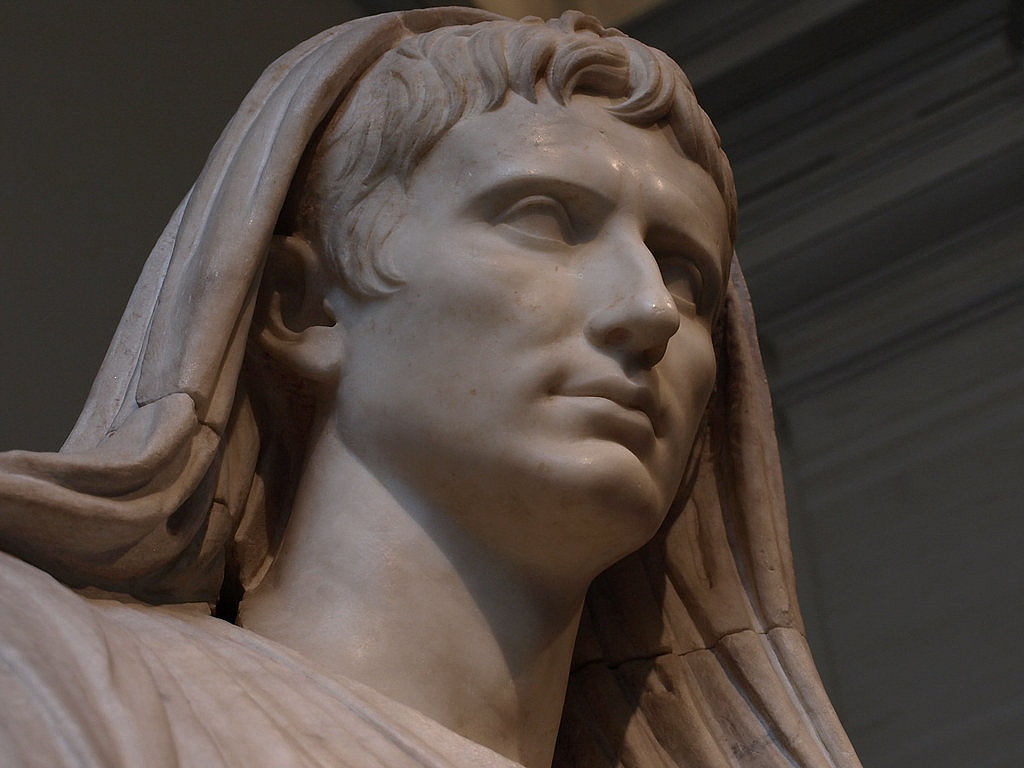
The Via Labicana Venus is a marble statue of the goddess Venus, discovered on the Via Labicana in Rome. Dating to around 100-150 CE, the statue is notable for its elegant and idealized portrayal of the goddess, reflecting the Roman fascination with Greek art and mythology among other artifacts from ancient Rome.
The statue of Venus is distinguished by its classical proportions and graceful posture, embodying the Roman ideal of beauty and divine elegance. The detailed carving and idealized features reflect the influence of Greek art on Roman sculpture and the emphasis on beauty and perfection in artistic representation.
The Via Labicana Venus is significant for its artistic and cultural context, illustrating the Roman adaptation of Greek artistic traditions and the role of mythology in Roman art as one of the primary artifacts from ancient Rome. The statue’s elegance and craftsmanship highlight the importance of divine representation and artistic ideals in Roman society.
1. The Trajan’s Column (113 CE) – Artifacts From Ancient Rome
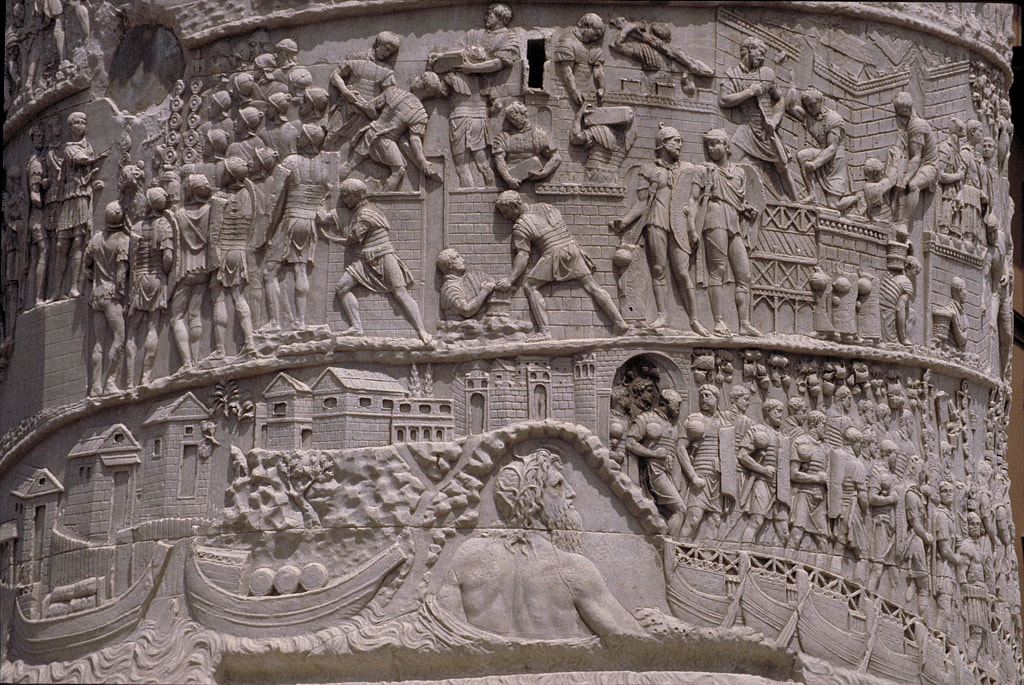
Trajan’s Column is a monumental column located in the Forum of Trajan in Rome, commemorating Emperor Trajan’s victory in the Dacian Wars. Completed in 113 CE, the column is renowned for its intricate reliefs that spiral around the shaft, depicting scenes from the campaigns and providing a detailed visual account of the events among artifacts from ancient Rome.
The column stands approximately 30 meters tall and is adorned with a continuous frieze that illustrates the major events of Trajan’s Dacian campaigns. The reliefs are notable for their detailed and dynamic representation of military and ceremonial scenes, offering a vivid portrayal of Roman military tactics and imperial propaganda.
Trajan’s Column is significant for its artistic and historical value, serving as both a monumental piece of propaganda and a detailed historical record of artifacts from ancient Rome. The column’s design and reliefs reflect the importance of commemorating military victories and reinforcing imperial authority in Roman society. It remains a key example of Roman architectural and artistic achievements, providing valuable insights into the grandeur and complexity of the Roman Empire.
The rare artifacts from ancient Rome provide a fascinating glimpse into the art, culture, and daily life of one of history’s most influential civilizations. Each of these artifacts from ancient Rome tells a unique story, reflecting the diverse aspects of Roman society, from religious practices and political propaganda to artistic achievements and personal expressions. By exploring these artifacts from ancient Rome and their stories, we gain a deeper appreciation for the richness of Roman history and the enduring legacy of its material culture. These artifacts from ancient Rome continue to captivate and inform, offering valuable insights into the world of ancient Rome and its remarkable contributions to human history.


